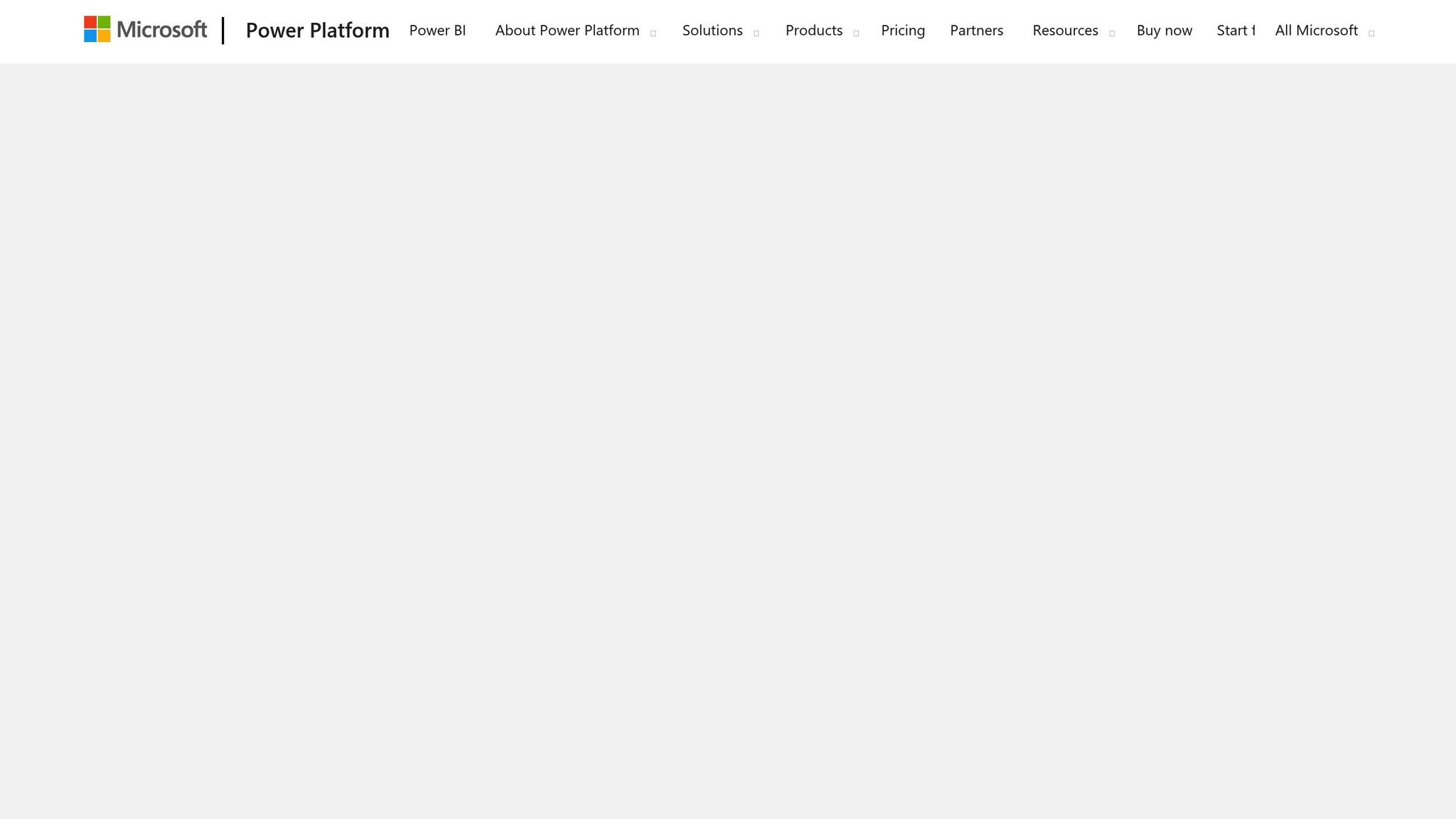Want more ticket sales, happy customers, and higher profits? Start tracking the right CMS analytics. From ticket sales trends to user engagement, these metrics reveal what’s working - and what’s not. Here's a quick look at what matters most:
- Ticket Sales & Attendance: Monitor total sales, seat occupancy (60-80% is ideal), and abandoned carts to spot revenue opportunities.
- Conversion Rates: Track how many website visitors actually buy tickets. Fixing checkout issues can boost revenue fast.
- Content Performance: See which trailers, promotions, and reviews drive clicks and sales.
- Revenue Insights: Measure average spending per customer and loyalty program success.
- User Engagement: Understand session duration, push notification responses, and feature adoption to keep customers coming back.
- Marketing ROI: Identify which campaigns deliver the best traffic, engagement, and ticket sales.
Cinemas using advanced CMS analytics report up to 89% growth in digital ticket sales. By focusing on these metrics, you can make smarter decisions, improve customer experiences, and maximize profits. Let’s dive deeper into how these metrics work and why they matter.
The Ultimate Power BI Dashboard Tutorial: Visualizing IMDB Movie Data

Attendance and Ticketing Metrics
When it comes to analyzing cinema performance, attendance and ticketing metrics are essential. These figures reveal how effectively a cinema draws in audiences and converts interest into ticket sales. Without tracking these key metrics, cinema managers risk missing out on opportunities to boost revenue and enhance the customer experience.
Total Ticket Sales and Trends
Monitoring ticket sales on a daily, weekly, and monthly basis provides a clear picture of performance trends. This isn’t just about tallying revenue - it’s about uncovering patterns that can guide decisions on programming, staffing, and marketing.
Another crucial metric is the seat occupancy rate, which measures how full screenings are. For mainstream cinemas, occupancy typically ranges between 60% and 80%, while niche venues often compensate for lower occupancy by setting higher ticket prices. For example, if 64 out of 80 available seats are filled for a show, the occupancy rate is 80% - a strong indicator of demand and efficient revenue use.
Modern CMS tools make it easier than ever to analyze audience trends. This data can reveal shifts in preferences, such as a growing interest in certain genres or dips in attendance during specific time slots. Armed with this knowledge, cinema managers can make proactive adjustments.
Dynamic pricing is another strategy that’s gaining traction. By analyzing real-time demand, cinemas can adjust ticket prices to optimize revenue. For instance, if Friday evening showings consistently sell out, premium pricing can be applied, while discounts can be offered during slower periods.
Next, it’s essential to assess how well digital channels convert interest into actual ticket purchases.
Conversion Rate: Visitors to Purchasers
The conversion rate measures the percentage of website or app visitors who complete a ticket purchase. This metric reflects how effectively digital platforms turn curiosity into sales. A low conversion rate often points to issues in the booking process, which can lead to lost revenue.
Advanced CMS platforms, such as Filmgrail, have been shown to increase moviegoer engagement by four times. This heightened engagement typically translates into higher conversion rates and more ticket sales.
Understanding customer behavior during the purchasing journey is key. Analytics can pinpoint where potential buyers drop off - whether it’s during movie selection, seat choice, or payment. With this information, cinema managers can make targeted improvements to remove obstacles and create a smoother experience.
Streamlined checkout processes are particularly important. Older ticketing systems often frustrate customers with cumbersome steps, leading to abandoned purchases. Modern CMS platforms address these pain points with user-friendly interfaces that guide customers seamlessly from browsing to checkout.
Identifying and addressing these friction points can significantly reduce abandoned carts.
Abandoned Cart Rate
The abandoned cart rate measures how often users start the ticket purchasing process but leave before completing it. This metric highlights specific issues in the booking flow and represents a direct loss of revenue that can often be recovered with targeted changes.
High abandoned cart rates are typically caused by friction points like unexpected fees, confusing navigation, or technical glitches. Analytics tools can identify exactly where users drop off, enabling managers to implement precise fixes.
To effectively analyze abandoned carts, it’s important to examine the entire customer journey. Modern analytics platforms track user behavior from browsing movies to final purchase, revealing patterns that signal abandonment risks. This data allows for proactive solutions, such as simplifying payment steps or sending reminders for incomplete transactions. By addressing these issues, cinemas can refine the checkout process and recover lost revenue.
| Metric | Purpose | Industry Benchmark | Actionable Insight |
|---|---|---|---|
| Total Ticket Sales | Assess film/showtime popularity & revenue | Varies by location/film | Adjust programming & promotions |
| Conversion Rate | Measure booking funnel efficiency | Not specified | Fix checkout friction |
| Abandoned Cart Rate | Identify checkout problems | Not specified | Simplify user experience to recover sales |
| Seat Occupancy Rate | Evaluate demand & pricing strategy | 60-80% (mainstream) | Adjust schedules & explore dynamic pricing |
Combining attendance and ticketing metrics with other data, like concession sales, provides a more complete picture of customer spending and overall profitability. This approach helps managers understand not just ticket sales, but the total value each customer brings to the cinema.
Customer retention rates offer another layer of insight. Boutique cinemas often report retention rates as high as 85%, underscoring the importance of tracking repeat visits alongside attracting new audiences. This information helps managers determine whether growth is driven by loyal customers or one-time visitors, enabling more targeted marketing and engagement strategies.
Content Performance Metrics
Understanding how digital content performs is essential for boosting engagement and driving ticket sales. Much like tracking attendance, analyzing content performance data helps turn viewer interest into actionable marketing strategies that can lead to increased revenue.
Trailer Views and Completion Rates
Trailer views provide a snapshot of initial audience interest, while completion rates reveal how captivating the trailer is. By comparing trailers with different completion rates, you can fine-tune editing techniques and adjust the content style to better capture attention. Many CMS platforms automatically track these metrics along with user device data, making it easier to gather insights. However, the real value comes from analyzing completion rates alongside other key metrics - like click-through rates to promotional pages or ticket purchases. This ensures that engaging trailers not only grab attention but also prompt action. These insights can shape your broader content strategy.
Engagement with Promotional Materials
Metrics like click-through rates (CTR), time spent on pages, and banner interactions shed light on how effectively promotional materials engage audiences. For digital campaigns, a CTR between 2–5% is often a good indicator of success, while a dwell time of more than 30 seconds suggests a higher likelihood of purchase. Dashboards that track device usage can also help cinemas optimize content for both mobile and desktop users. By comparing campaign metrics across different promotions, cinemas can refine their visual design and messaging to better connect with their audience. Additionally, analyzing user-generated content can provide deeper insights into community sentiment.
User-Generated Content Metrics
User-generated content, such as reviews and ratings, offers authentic feedback about films and the overall cinema experience. Reviews from local audiences are particularly valuable, as they reflect the preferences and sentiments of the community. Tracking metrics like review volume, sentiment, and engagement can help gauge audience satisfaction. High participation in reviews indicates strong community involvement, while lower engagement might signal a need for better incentives or an easier feedback process. Platforms like Filmgrail tap into this local connection by collecting reviews and ratings from moviegoers in the same city, ensuring the feedback is relevant and actionable. Over time, sentiment analysis of this content can highlight trends that inform operational changes and future content strategies.
| Content Type | Key Metrics | Success Indicators | Actionable Insights |
|---|---|---|---|
| Trailers | Views, completion rates, device usage | High completion rate | Adjust trailer length and content to boost engagement. |
| Promotional Materials | CTR, time on page, banner interactions | CTR of 2–5% and extended engagement time | Improve visual design and refine messaging. |
| User Reviews | Volume, sentiment, local engagement | High review participation and positive sentiment | Use feedback to strengthen community ties and address concerns. |
Revenue and Monetization Metrics
Revenue metrics help you understand how well your CMS turns audience engagement into profit. These go beyond just ticket sales, uncovering ways to increase earnings per customer visit. By analyzing spending patterns, you can fine-tune strategies to maximize each transaction.
Average Transaction Value
Average Transaction Value (ATV) tracks how much customers spend per visit, factoring in tickets, concessions, and merchandise. It’s a key metric for spotting upselling opportunities and evaluating your revenue strategies.
With CMS analytics, you can dive deep into spending habits by linking purchases to individual customer profiles. Breaking this data down by customer type and product category allows for smarter targeting. For instance, you might discover which snacks sell better with specific movie genres, guiding pricing and product bundling decisions. Research shows that well-executed pricing strategies can increase gross profit by up to 12%.
Membership Program Engagement
Loyalty programs are a reliable way to encourage repeat visits and drive steady revenue. To measure their success, track metrics like enrollment rates, renewal percentages, and spending comparisons between members and non-members. Boutique cinemas, for example, often achieve retention rates as high as 85%.
Loyalty systems can amplify customer engagement, sometimes quadrupling it compared to standard ticket sales. To refine these programs, monitor member lifetime value alongside acquisition costs. Analytics can also pinpoint where participation drops off, enabling you to re-engage members with personalized offers or timely push notifications.
Promotional Code Redemption Rates
Promotional codes are a proven tool for boosting traffic and sales. By tracking redemption rates - calculated as codes used divided by codes distributed - you can see which campaigns turn casual browsers into paying customers. But it’s not just about the numbers; consider the broader revenue impact of these campaigns.
For better results, tailor promotional offers to individual viewing habits and spending trends rather than relying on generic discounts. Linking promotional code usage to customer lifetime value helps identify campaigns that contribute to long-term growth. Cinemas using advanced analytics report an impressive 89% average increase in digital ticket sales annually, showcasing the value of actionable insights from these metrics.
sbb-itb-b1b0647
User Engagement and Behavior Metrics
User engagement metrics add depth to attendance and content data, giving you a clearer picture of how customers interact with your platform. These insights can reveal what keeps users coming back - or what might be driving them away.
Session Duration and Page Views
Session duration and page views are key indicators of how engaged users are with your digital platform. Longer sessions suggest sustained interest, while higher page views indicate active exploration rather than casual browsing.
Analyzing these metrics across different user segments can uncover valuable patterns. For instance, new visitors may initially spend less time on the platform but often return for longer sessions as they become more familiar. On the other hand, regular users tend to show consistent engagement patterns, which can help refine your content strategy. Keep an eye on bounce rates alongside session duration - if users leave quickly from certain pages, those areas might need attention.
It's also important to consider the customer journey. For example, users who spend time browsing movie details, checking showtimes, and reading reviews are more likely to convert into ticket buyers. This behavior data can help you optimize page layouts and strategically place content. These organic engagement metrics naturally lead to evaluating triggered interactions, such as push notifications.
Push Notification Open Rates
Push notifications take engagement a step further by directly prompting user action. Open rates reveal how well your messages resonate with your audience, while click-through rates show whether the content successfully motivates users to act.
Modern cinema platforms allow for targeted push notifications on both apps and websites. These can include personalized messages about new releases, special offers, or updates to users' watchlists. Using user profile data, you can tailor notifications to individual preferences.
Pay attention to which types of notifications generate the best results. Messages about movies users have already added to their watchlists typically outperform generic promotional content. Timing is crucial too - notifications sent during peak browsing hours tend to get better open rates than those sent at random times. Once you've optimized your messaging, the next step is to track how users interact with specific platform features.
Feature Adoption Rates
Feature adoption rates reveal which tools and functionalities users actively engage with and which ones might need more visibility or improvement. This metric helps prioritize development efforts and ensures resources are allocated effectively.
A great starting point is user profile creation, which serves as a baseline for feature adoption. Platforms offering clear value for creating profiles often see high participation - studies suggest that 9 out of 10 users create profiles when the benefits are evident.
Track the adoption of features like watchlists, ratings, and loyalty programs. These tools often drive revenue and justify further investment. For instance, high engagement with watchlists and loyalty enrollments often correlates with increased revenue, signaling a well-designed platform.
Cinema-specific analytics platforms are especially effective, delivering 4 times more moviegoer engagement than standard ticketing solutions. This is largely because they continuously track and refine these behavioral metrics, helping you stay ahead of user needs.
Marketing Campaign Performance Metrics
Understanding user behavior isn't just useful for internal insights - it’s also critical for evaluating external promotional efforts. Marketing campaigns often require substantial investments, so tracking their performance is essential. By analyzing which campaigns deliver actual results, you can allocate your budget more effectively and boost revenue from your promotional activities.
Traffic from Campaign Sources
Knowing where your traffic comes from is key to understanding which channels attract customers. Your CMS analytics should categorize visitors by campaign sources - like social media ads, email campaigns, Google Ads, or promotional partnerships - so you can see which platforms are driving the most engaged users.
Tools like UTM parameters make this process even more precise. These snippets of code added to your campaign URLs allow you to track exactly which ad, email, or post brought each visitor to your site.
What matters most is quality over quantity. For example, a campaign that drives 1,000 visitors with a 2% conversion rate can outperform one that brings in 2,000 visitors with only a 0.5% conversion rate. Patterns in user behavior can also provide valuable insights. Visitors from email campaigns, for instance, often show higher engagement since they’re already familiar with your brand.
Cross-channel attribution is another layer to consider. A customer might first see your Facebook ad, then search for your cinema on Google, and finally convert after receiving a promotional email. Analyzing these touchpoints helps refine your strategy and optimize each stage of the customer journey.
Email and Social Media Engagement
Email and social media metrics offer a snapshot of how well your campaigns are performing. Industry benchmarks like a 20% open rate and a 2% click-through rate for emails can serve as a guide. Segmented email campaigns tend to perform better than generic ones. For example, sending action movie updates to fans of the genre or family-friendly showtimes to parents can yield higher engagement.
Social media metrics require a slightly different approach. While reach and impressions tell you how many people saw your content, engagement rates - likes, shares, and comments - reveal how compelling your message is. Timing and relevance are crucial. A post about a highly anticipated movie might rack up views but fail to engage if it doesn’t resonate with your audience.
Referral traffic from social platforms is another critical metric. For instance, a behind-the-scenes video might generate plenty of likes and comments but fail to drive website visits. In contrast, a post with a clear call-to-action can directly lead to ticket sales.
Campaign ROI
Calculating ROI turns marketing into a science rather than guesswork. The formula - ROI = (Revenue − Costs) / Costs - gives you a straightforward way to measure success.
Real-time ROI tracking allows you to quickly identify underperforming campaigns and make adjustments on the fly, ensuring your marketing spend aligns with your revenue goals. Cinema analytics platforms that track the entire customer journey can make these calculations even more accurate. When 90% of your users create unique profiles, you can follow their path from initial campaign interaction to ticket purchase.
Don’t overlook long-term value. Some campaigns may only break even on immediate ticket sales but still deliver lasting benefits by attracting customers who return frequently or join your loyalty programs. These repeat visitors can significantly enhance the overall impact of your marketing efforts.
Conclusion: Turning Metrics into Actionable Insights
Metrics alone don’t drive success - it’s how you use them that counts. The top-performing cinemas don’t just gather data; they use it to make smarter decisions. Take Starlight Cinema Lounge as an example. By tweaking their screening schedules and introducing dynamic pricing based on historical data, they reached an impressive 80% seat occupancy. The result? Increased revenue and better use of resources.
When you have a full picture of your customers, data-driven decisions become even more powerful. Personalized engagement, built on detailed insights, can generate up to four times more interaction compared to standard industry practices.
Consistent monitoring of analytics doesn’t just help you grow - it saves money too. On average, it can cut expenses by 15% and increase gross profit by 12%. These gains come from fine-tuning everything from showtimes to promotional efforts, all guided by actual performance data.
In the fast-paced world of cinema, staying ahead requires constant adaptation. Customer preferences evolve, and seasonal trends shift. Cinemas that regularly update their analytics strategies are better equipped to thrive. For instance, boutique theaters focusing on customer-centric analytics have achieved up to 85% customer retention.
Another game-changer? Training your team to understand and act on analytics. When staff can make informed, real-time decisions, you’re not just reacting - you’re staying ahead of the curve.
The secret to success lies in creating a continuous improvement loop: keep an eye on your metrics, spot trends and opportunities, make changes, and measure the outcomes. This process turns analytics into a powerful growth tool, improving customer experiences while boosting your bottom line. It’s a strategy that ensures your cinema remains competitive in an ever-changing industry.
FAQs
How can cinemas use CMS analytics to boost ticket sales and enhance the moviegoer experience?
Cinemas can tap into CMS analytics to better understand their audience - what they like, how they behave, and how they engage with the theater experience. By digging into this data, cinemas can fine-tune marketing efforts, suggest movies that align with individual tastes, and craft a more tailored experience for their visitors.
Metrics such as ticket sales patterns, peak booking hours, and trending genres provide the foundation for smarter, revenue-focused decisions. On top of that, paying attention to customer feedback and preferences allows cinemas to roll out targeted promotions and enhance satisfaction, making each visit more enjoyable and memorable.
What causes high cart abandonment rates in cinemas, and how can they be reduced?
High cart abandonment rates at cinemas often stem from a few common frustrations: unexpected fees popping up at checkout, overly complicated or drawn-out checkout processes, limited payment options, or simply getting distracted mid-purchase. These hurdles can easily discourage customers and cause them to walk away before finalizing their tickets.
To tackle this, cinemas should focus on streamlining the checkout process. Cutting down on the number of steps and making the interface intuitive can go a long way. Being upfront about pricing, offering a variety of payment methods - like credit cards and digital wallets - and sending polite reminders for unfinished purchases can also keep customers engaged. On top of that, integrating perks like automatic discounts or loyalty rewards can make the process smoother and more appealing, encouraging people to complete their transactions.
How can cinemas use content performance metrics to improve marketing and boost ticket sales?
Cinemas can tap into content performance metrics to better understand what their audience enjoys and how they behave. By looking at data like how many times a trailer is viewed, how often movies are added to watchlists, or how people interact with promotional materials, cinemas can fine-tune their marketing efforts to connect more effectively with moviegoers.
Using this data, cinemas can craft campaigns that feel more personal, send notifications at the right moment, and spotlight films that are likely to capture attention. This approach not only boosts ticket sales but also makes the overall moviegoing experience more engaging for customers.


